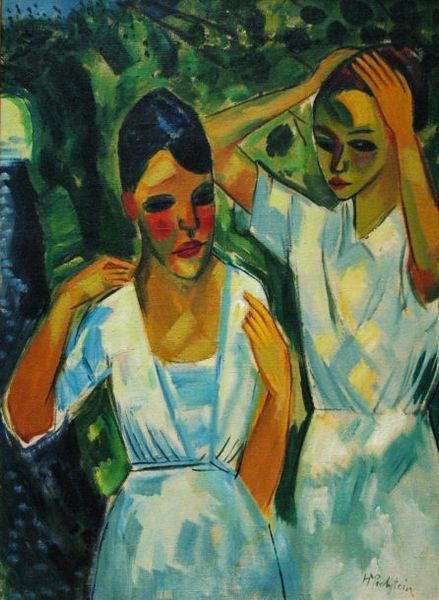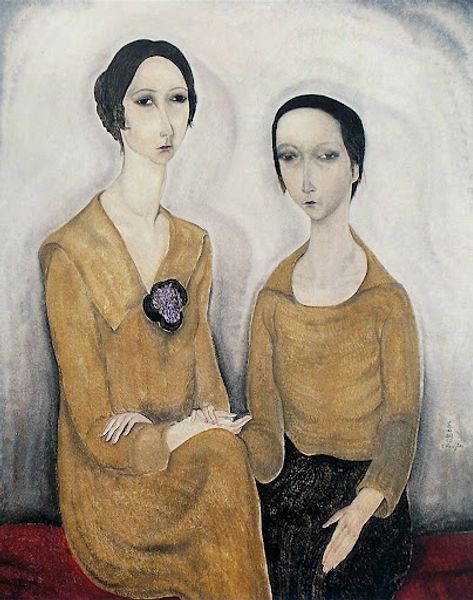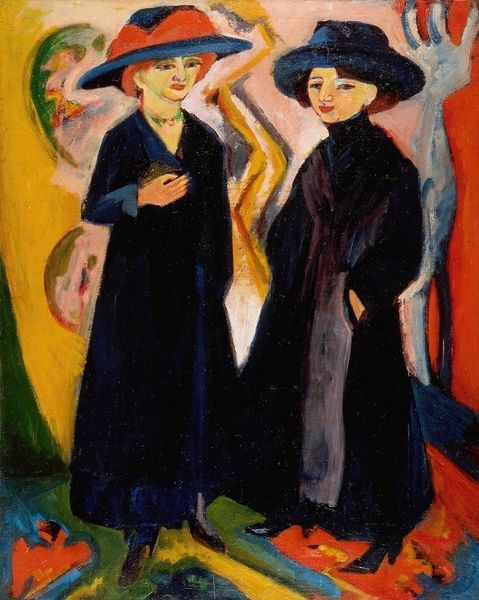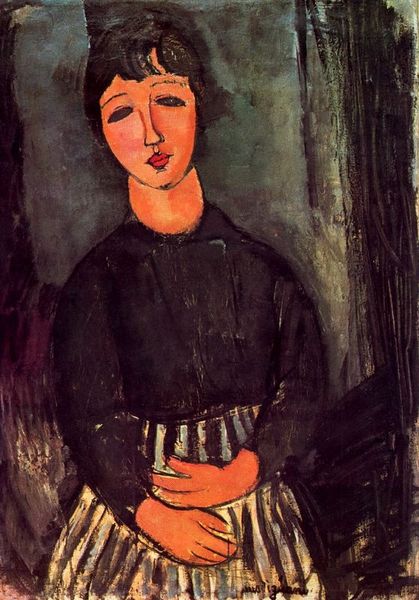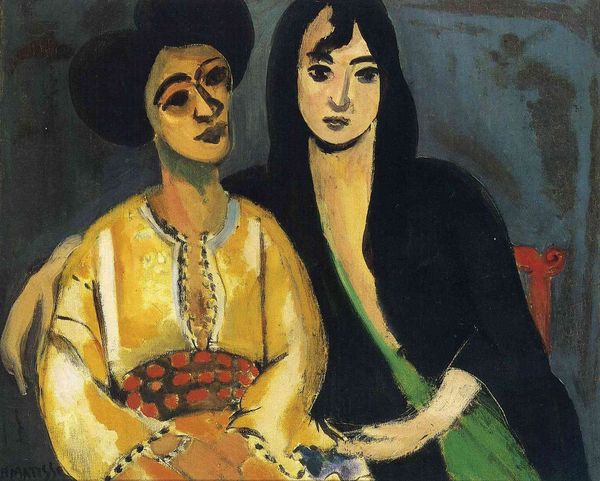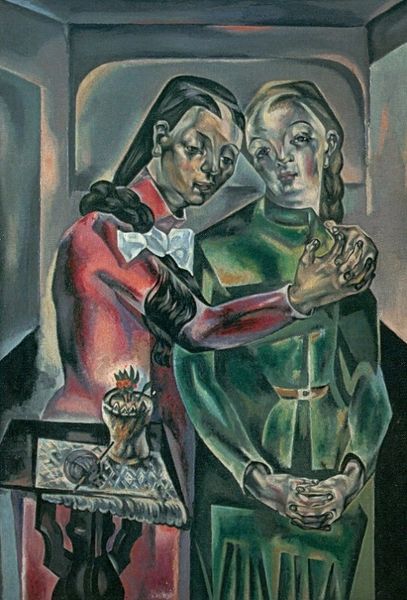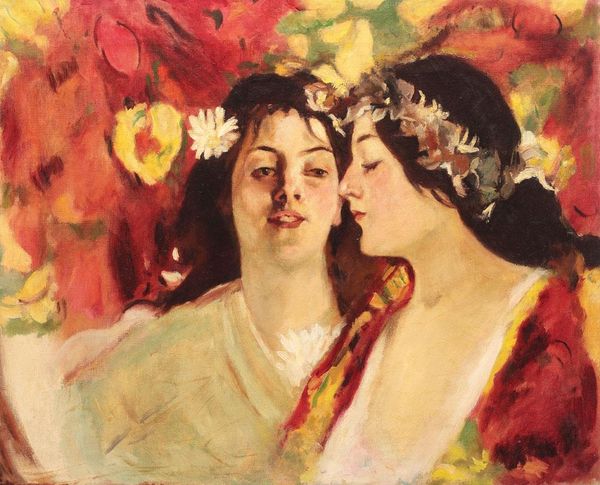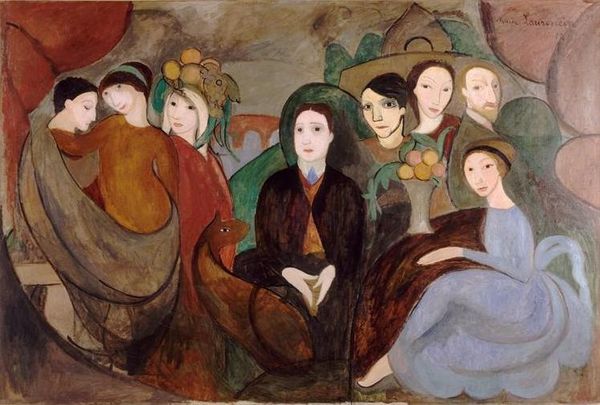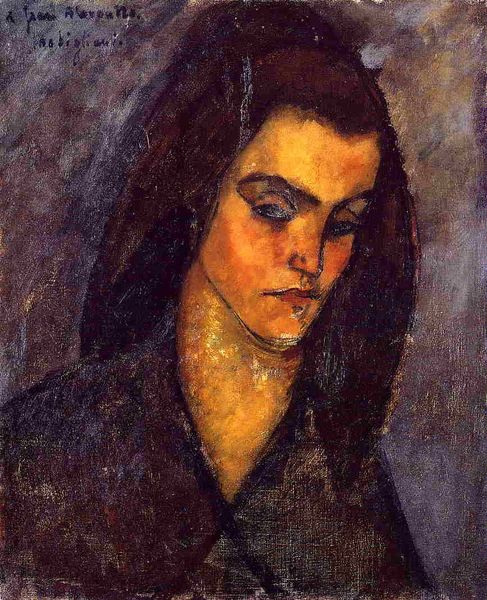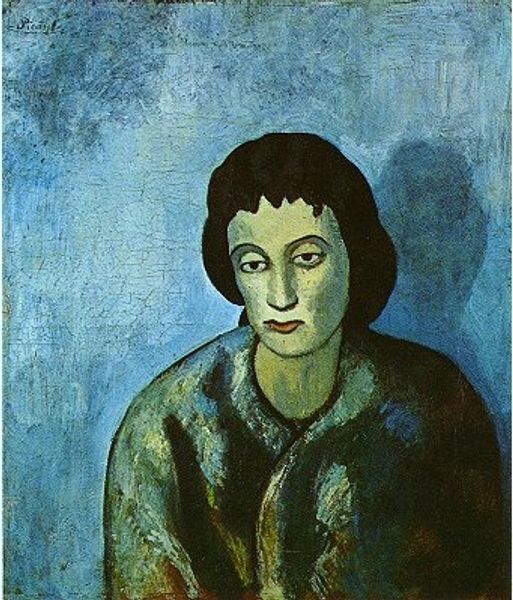
painting, oil-paint
#
portrait
#
painting
#
oil-paint
#
figuration
#
oil painting
#
group-portraits
#
modernism
#
realism
Dimensions: 58 x 55 cm
Copyright: Rafael Zabaleta,Fair Use
Curator: Rafael Zabaleta’s painting, "Two Women and Self-Portrait Bust," dating to 1939, presents a compelling study of female representation and the artist's gaze within a turbulent historical context. Editor: It strikes me as immediately unsettling, almost haunting. The palette is muted, and their expressions seem detached, lost in thought or perhaps apprehension. I feel a kind of unease just looking at them, like interrupting a private, somber moment. Curator: Indeed. The somber tone might reflect the prelude to the Spanish Civil War that Zabaleta experienced firsthand. We might interpret the women's gazes and the presence of the artist's bust as indicators of shifting gender roles and an introspective analysis of the male artistic ego amidst national crisis. Editor: I like the artist-bust detail; there's something creepy about its detached stare. And the women themselves, they almost blend into the background, their forms flattened, subsumed. Is Zabaleta hinting at the silencing of women's voices in times of conflict? It’s interesting to note how the red lipstick accentuates the melancholy and almost tragic dimension in these figures. Curator: Precisely. Examining the color choices is revealing. The muted, almost greyed tones contrast with the striking red of their lips, an assertion of femininity even within a landscape of impending war and potential erasure. One might even consider the interplay of interiority and exteriority – the women's internal emotional lives contrasted with the external, societal pressures they face. Editor: The geometry is interesting too, that sort of almost-cubist edge of the modernist movement with a sense of solidity, even of classicism; they feel ancient and immediate at once, if that makes sense. It reminds me of Picasso’s treatment of women. It makes you wonder: Who were these women? Were they muses, lovers, witnesses? And that silent, knowing bust lurking in the shadows – it’s almost a ghost, watching over them, haunting. I keep thinking of old family photos, the secrets hidden in the background. Curator: Precisely. Engaging with this work, we find ourselves at an intersection: Zabaleta's modernist engagement with form meeting a fraught sociopolitical climate. This pushes us to consider how artists grapple with their own identity, while capturing, maybe even shaping, the narrative of the women who populate their world. Editor: I'm walking away with a renewed sense of empathy, a deeper appreciation for the silences and complexities embedded within these older works of art and the figures immortalized. Thanks to "Two Women and Self-Portrait Bust" I see more now than I did just a couple of minutes ago.
Comments
No comments
Be the first to comment and join the conversation on the ultimate creative platform.

